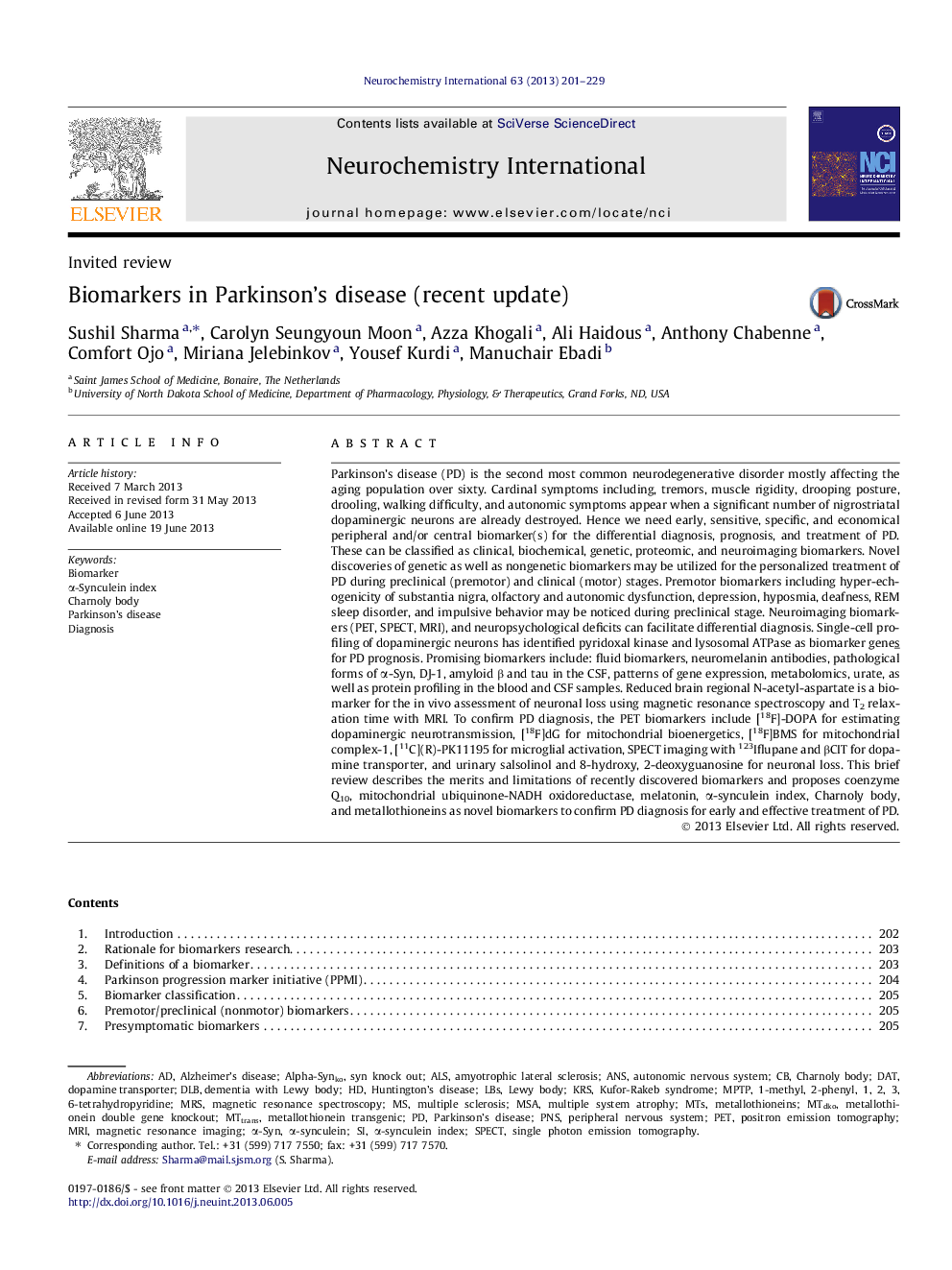| کد مقاله | کد نشریه | سال انتشار | مقاله انگلیسی | نسخه تمام متن |
|---|---|---|---|---|
| 2200581 | 1099951 | 2013 | 29 صفحه PDF | دانلود رایگان |

• In vivo as well as in vitro diagnostic biomarkers have been developed.
• Biomarkers facilitate early, non-invasive, and effective treatment of PD.
• Both genetic and nongenetic biomarkers facilitate clinical management of PD.
• α-Synculein index and Charnoly body may be used as sensitive biomarkers of PD.
• A novel discovery of diagnostic biomarker of PD is needed.
Parkinson’s disease (PD) is the second most common neurodegenerative disorder mostly affecting the aging population over sixty. Cardinal symptoms including, tremors, muscle rigidity, drooping posture, drooling, walking difficulty, and autonomic symptoms appear when a significant number of nigrostriatal dopaminergic neurons are already destroyed. Hence we need early, sensitive, specific, and economical peripheral and/or central biomarker(s) for the differential diagnosis, prognosis, and treatment of PD. These can be classified as clinical, biochemical, genetic, proteomic, and neuroimaging biomarkers. Novel discoveries of genetic as well as nongenetic biomarkers may be utilized for the personalized treatment of PD during preclinical (premotor) and clinical (motor) stages. Premotor biomarkers including hyper-echogenicity of substantia nigra, olfactory and autonomic dysfunction, depression, hyposmia, deafness, REM sleep disorder, and impulsive behavior may be noticed during preclinical stage. Neuroimaging biomarkers (PET, SPECT, MRI), and neuropsychological deficits can facilitate differential diagnosis. Single-cell profiling of dopaminergic neurons has identified pyridoxal kinase and lysosomal ATPase as biomarker genes for PD prognosis. Promising biomarkers include: fluid biomarkers, neuromelanin antibodies, pathological forms of α-Syn, DJ-1, amyloid β and tau in the CSF, patterns of gene expression, metabolomics, urate, as well as protein profiling in the blood and CSF samples. Reduced brain regional N-acetyl-aspartate is a biomarker for the in vivo assessment of neuronal loss using magnetic resonance spectroscopy and T2 relaxation time with MRI. To confirm PD diagnosis, the PET biomarkers include [18F]-DOPA for estimating dopaminergic neurotransmission, [18F]dG for mitochondrial bioenergetics, [18F]BMS for mitochondrial complex-1, [11C](R)-PK11195 for microglial activation, SPECT imaging with 123Iflupane and βCIT for dopamine transporter, and urinary salsolinol and 8-hydroxy, 2-deoxyguanosine for neuronal loss. This brief review describes the merits and limitations of recently discovered biomarkers and proposes coenzyme Q10, mitochondrial ubiquinone-NADH oxidoreductase, melatonin, α-synculein index, Charnoly body, and metallothioneins as novel biomarkers to confirm PD diagnosis for early and effective treatment of PD.
Journal: Neurochemistry International - Volume 63, Issue 3, September 2013, Pages 201–229